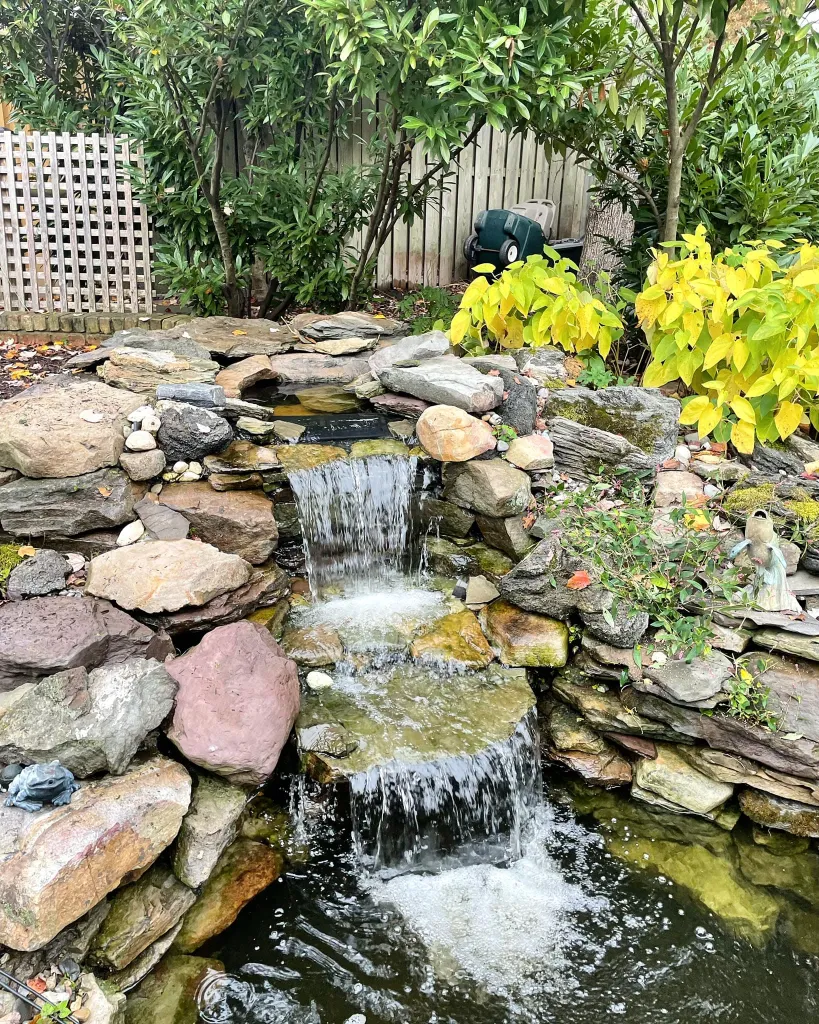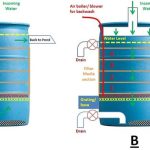Water features can add a sense of tranquility and beauty to any outdoor space, and a waterfall pond is one of the most captivating options. The gentle sound of flowing water, the lush greenery surrounding the pond, and the sight of colorful fish swimming lazily can create a peaceful oasis in your backyard. Building a waterfall pond feature may seem like a daunting task, but with the right guidance and a little bit of effort, you can create a stunning focal point for your outdoor landscape.

Credit: aquaticgarden.com
Planning and Design
Before you begin digging or purchasing any materials, it’s important to carefully plan and design your waterfall pond feature. Start by determining the ideal location for your pond. Consider factors such as sunlight exposure, proximity to trees or other structures, and the overall layout of your yard.
Once you’ve chosen the location, sketch out a rough design for your pond feature. Consider the size and shape of the pond, the placement of the waterfall, and any additional features such as rocks or plants. Keep in mind that the more natural and organic the design, the more visually appealing your pond will be.

Credit: premierpond.com
Gathering Materials
Building a waterfall pond feature requires several key materials. You will need a pond liner to hold the water, a pump to circulate the water, rocks and gravel for landscaping, and possibly a pre-formed waterfall kit for added convenience. Depending on the size and complexity of your design, you may also need additional materials such as tubing, a filtration system, and aquatic plants.
When selecting materials, it’s important to choose high-quality products that are designed to withstand outdoor conditions. Research different options and consider seeking advice from professionals at your local garden center or landscaping supply store.
Excavation and Installation
Once you have your materials in place, it’s time to start the excavation process. Use a garden hose or spray paint to outline the shape of your pond, and then begin digging. The depth of your pond will depend on the size of your pump and the type of aquatic life you plan to include. In general, a depth of 18 to 24 inches is suitable for a basic pond, while deeper ponds may be necessary for larger fish or aquatic plants.
After digging the pond, carefully install the pond liner, ensuring that it fits securely and smoothly. Next, position the pump in the deepest part of the pond and connect it to the tubing that will carry water to the top of the waterfall. If you’re using a pre-formed waterfall kit, follow the manufacturer’s instructions for installation, making sure to securely anchor the waterfall in place.
Landscaping and Finishing Touches
With the basic structure of the pond and waterfall in place, it’s time to focus on landscaping and finishing touches. Arrange rocks and gravel around the edges of the pond, creating a natural and visually appealing border. Consider incorporating a variety of plant life, such as water lilies, lotus flowers, or floating plants, to add color and texture to the pond.
Once the landscaping is complete, fill the pond with water and turn on the pump to test the flow of the waterfall. Adjust the positioning of rocks and the flow of water as needed to achieve the desired effect. Finally, consider adding fish or other aquatic life to bring your pond feature to life.
Maintenance and Care
After completing your waterfall pond feature, it’s important to establish a regular maintenance routine to keep it looking its best. Regularly check the pump and filtration system to ensure they are functioning properly, and clean the pond periodically to remove debris and maintain water quality.
Additionally, be mindful of the surrounding vegetation and make sure to trim back any overhanging branches or foliage that could potentially clog the pond or disrupt the flow of the waterfall. Finally, monitor the health of any fish or plants in the pond, and make adjustments to the environment as needed to ensure their well-being.
Conclusion
Building a waterfall pond feature can be a rewarding and fulfilling project that adds beauty and serenity to your outdoor space. By carefully planning and designing your pond, selecting high-quality materials, and paying attention to detail during installation and landscaping, you can create a stunning focal point that will be enjoyed for years to come. With regular maintenance and care, your waterfall pond feature will continue to thrive, providing a peaceful retreat in your own backyard.
Remember to enjoy the process and take pride in the creation of your own little piece of paradise.




